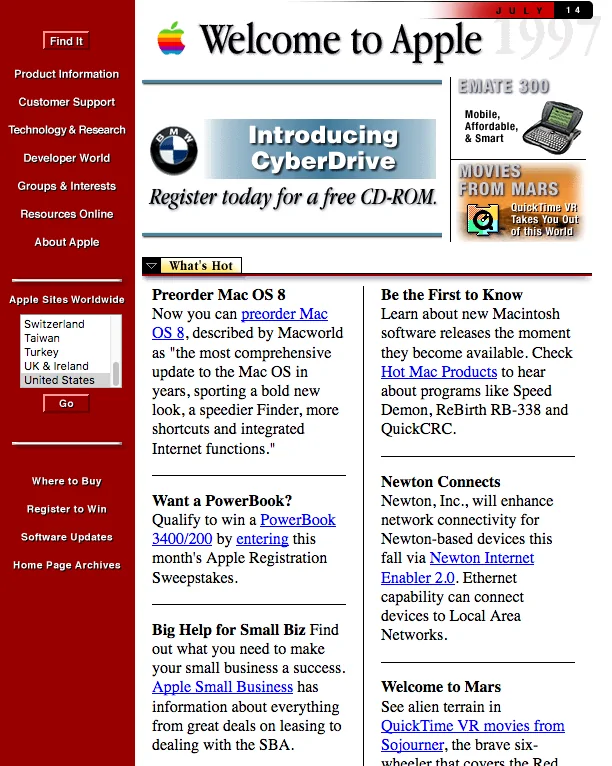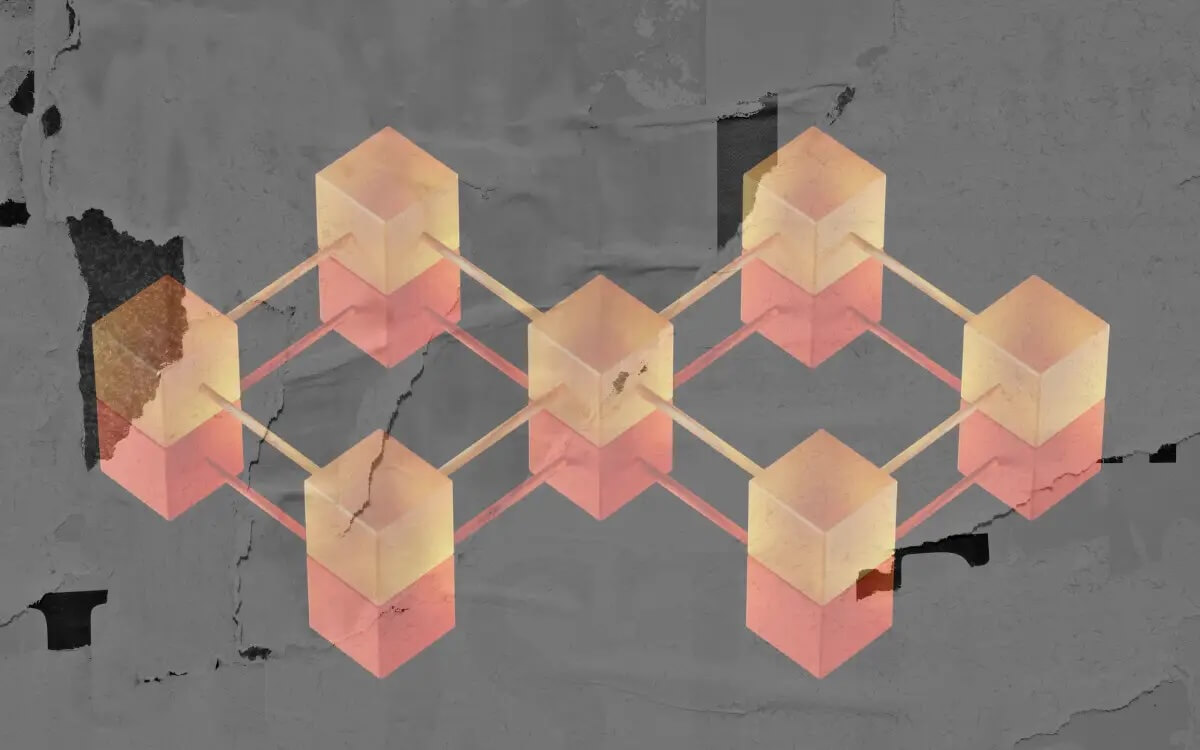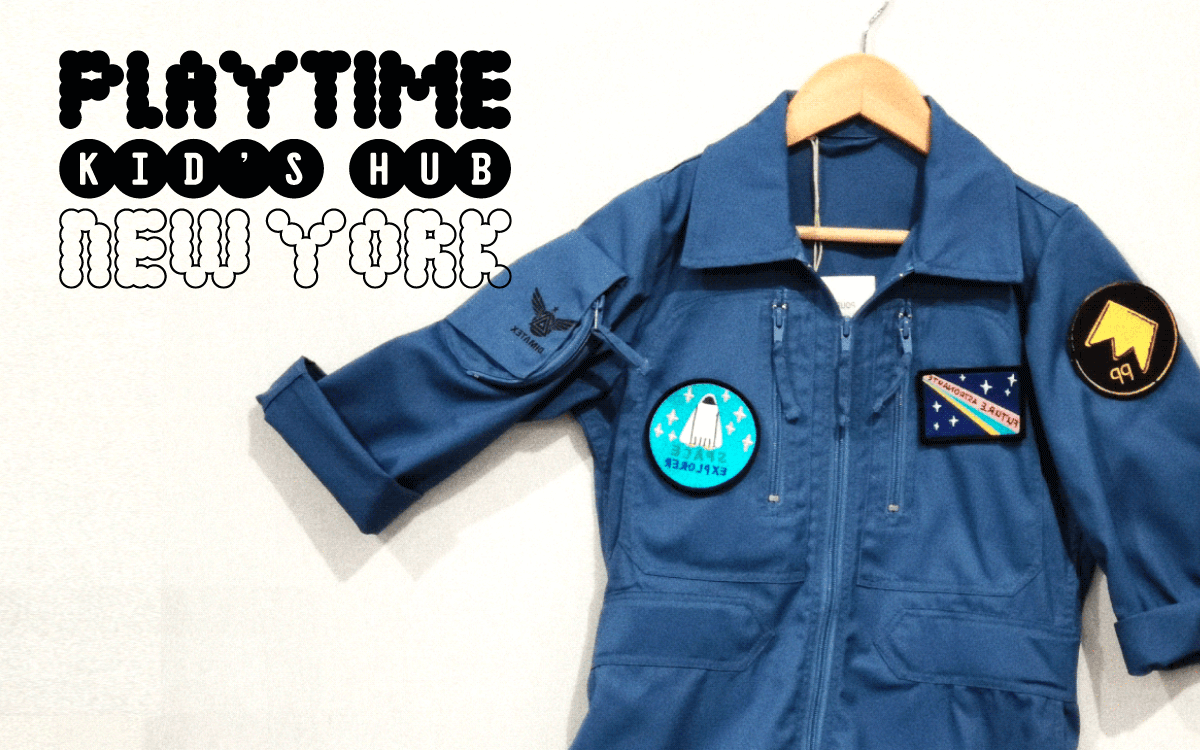The internet has come a long way since its inception. From the early days of static web pages and limited connectivity, it has evolved into a dynamic, interconnected ecosystem that influences nearly every aspect of our lives. Web 2.0 revolutionized the internet by introducing user-generated content, social media, and interactive web applications. Now, we stand on the cusp of another significant transformation – Web 3.0. In this blog, we’ll explore what Web 3.0 is and why it’s garnering so much attention.
Table of Contents
Web 1.0 and 2.0 Recap
Before diving into Web 3.0, let’s briefly recap its predecessors:
Web 1.0 (The Static Web): This era, which began in the early 1990s, was characterized by static web pages and a one-way flow of information. Users could read content, but there was little interaction. Current examples of this include one-off landing pages and portfolio websites.

Apple.com in 1997. Source: Version Museum
This style of web page offers several advantages, foremost among them being its simplicity to create and maintain. Static websites are typically faster than their more dynamic counterparts. However, it’s essential to acknowledge that static pages present challenges when it comes to scaling, personalization, and adapting to contemporary needs like online shopping.
Web 2.0 (The Social Web): Around the mid-2000s, Web 2.0 emerged, bringing interactive and social features. Users could now contribute content, comment on articles, and connect with others on platforms like Facebook, Twitter, and YouTube.

Web 3.0
Web 3.0 is the next logical step in the evolution of the internet. Unlike its predecessors, it seeks to create a more intelligent, interconnected, and secure digital ecosystem. Several key characteristics define Web 3.0:
- Interoperability: Web 3.0 aims to break down the silos that exist between different web platforms and applications. It strives for seamless data exchange and communication between services, enabling more integrated experiences for users.
- Decentralization: At the heart of Web 3.0 is the idea of decentralization. It leverages blockchain technology and distributed ledger systems to remove the need for centralized intermediaries, giving users more control over their data and online activities.
- Semantic Data: The “semantic” aspect of Web 3.0 refers to a deeper understanding of data. In this era, data is not just raw information but is enriched with meaning and context, allowing machines to better interpret and utilize it.
- Artificial Intelligence (AI): AI plays a pivotal role in Web 3.0, powering smart applications that can make personalized recommendations, understand natural language, and adapt to user preferences.
- Privacy and Security: Security and privacy are paramount in Web 3.0. Users have greater control over their data, thanks to decentralized technologies. They can choose what to share and with whom, and their data is less susceptible to breaches.
- Community-Driven: Web 3.0 is community-driven through decentralization, token economies, decentralized governance, open-source collaboration, user empowerment, and interoperability, all of which aim to give users more control and influence over the digital ecosystem.
Use Cases and Applications
The principles of Web 3.0 are being applied across various domains:
- Finance: Decentralized finance (DeFi) applications enable peer-to-peer financial transactions, eliminating traditional banks as intermediaries.
- Identity and Credentials: Blockchain-based solutions are redefining how individuals manage their identities and certifications, offering a secure and verifiable system.
- Content Creation: Web 3.0 is changing the way content creators monetize their work. NFTs (non-fungible tokens) allow artists to sell unique digital assets and creations directly to their fans.
- IoT (Internet of Things): Web 3.0 can provide a more secure and interconnected IoT ecosystem. Smart devices can communicate directly with each other, improving efficiency and security.
Challenges and Concerns
Despite its potential, Web 3.0 faces several challenges and concerns:
- Technical Complexity: The technologies underpinning Web 3.0, like blockchain and AI, can be complex, making adoption and development challenging.
- Regulatory Hurdles: Governments and regulatory bodies are still grappling with how to oversee and tax decentralized systems.
- Scalability: Web 3.0 must address issues related to scalability to support widespread adoption.
Recommendations for Brand in the Web 3 Era
As Web 3.0 continues to shape the digital landscape, brands must adapt to the changing tides of technology and user expectations. Here are our recommendations:
- Stay Informed: Web 3.0 is a rapidly evolving field. Brands should invest in staying informed about the latest developments in blockchain, AI, and decentralized technologies. This knowledge can inform their strategic decisions and keep them ahead of the curve.
- Embrace Decentralization: Explore how your brand can integrate decentralization into its operations. This could involve using blockchain for supply chain transparency or accepting cryptocurrencies as payment options. Decentralization can build trust and security, which resonates with Web 3.0’s principles.
- Content Creation: Consider leveraging NFTs and blockchain technology for unique content creations. Artists and creators can mint their digital art as NFTs, creating new revenue streams and engaging with a tech-savvy audience.
- User Data Privacy: With the growing emphasis on privacy in Web 3.0, prioritize the protection of user data. Be transparent about data collection and storage practices, and give users control over their information. Building trust in this area is vital.
- Engage with the Community: Web 3.0 often thrives on vibrant online communities. Engage with these communities through social media, forums, and platforms related to your industry. Building a strong online presence in Web 3.0 spaces can boost brand recognition.
- Educate Your Audience: Many consumers may not fully understand Web 3.0 and its implications. Use your marketing and PR efforts to educate your audience about the benefits and changes that this new era brings. Show them how your brand is adapting to these changes to provide a better user experience.
- Collaborate and Partner: Seek out partnerships with other organizations in the Web 3.0 space. Collaborative efforts can expand your reach and tap into the collective power of a networked, decentralized world.
- Compliance and Regulation: Keep an eye on regulatory developments related to Web 3.0 technologies. Ensure that your operations comply with relevant regulations, which can vary from one region to another.
By proactively embracing Web 3.0 and aligning your marketing and PR strategies with the principles of decentralization, security, and transparency, your brand can not only navigate the evolving digital landscape but also position itself as a forward-thinking leader in the Web 3.0 era.
Never Miss a Chance to Get Ahead
Every leader needs a trusted team of strategic advisors as they navigate challenges in a rapidly changing world. Experience firsthand how the right team can make an impact on your brand and business performance – to request a consultation today, Contact Us.




